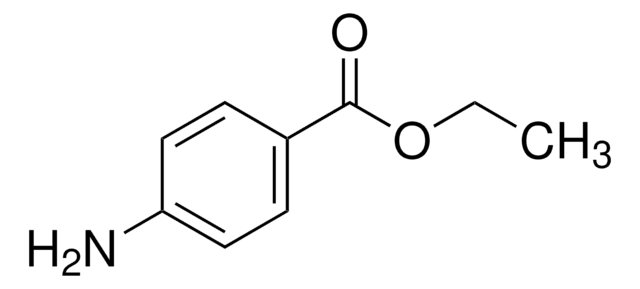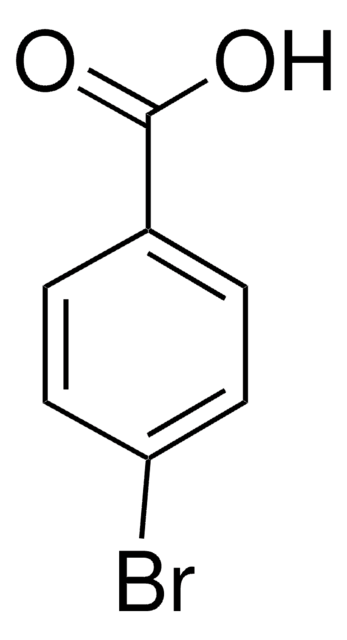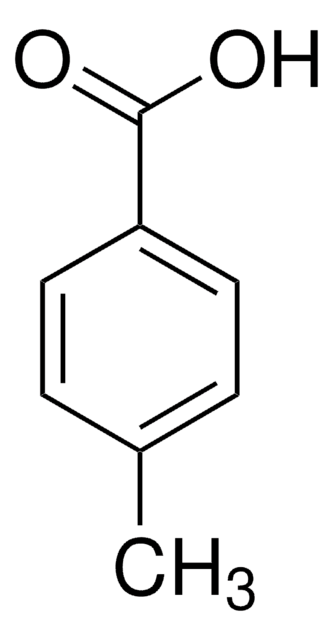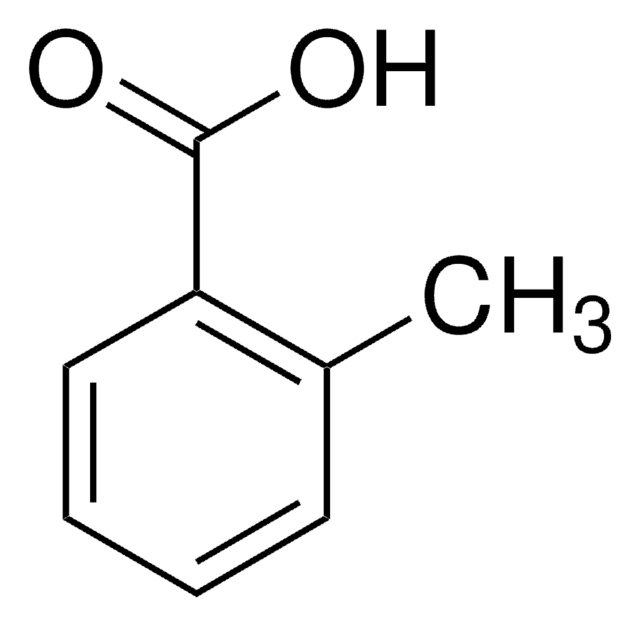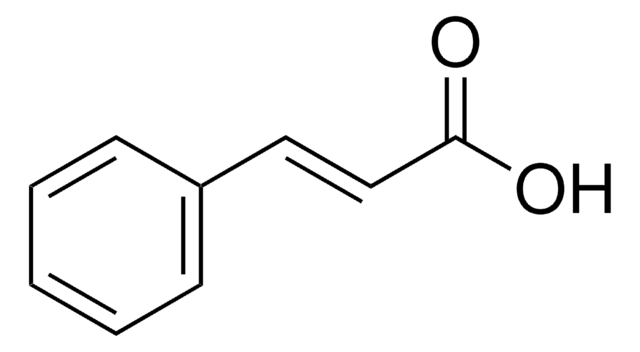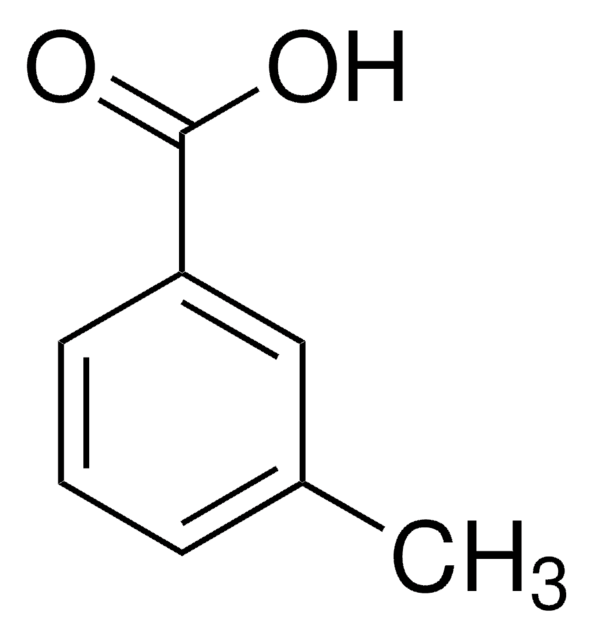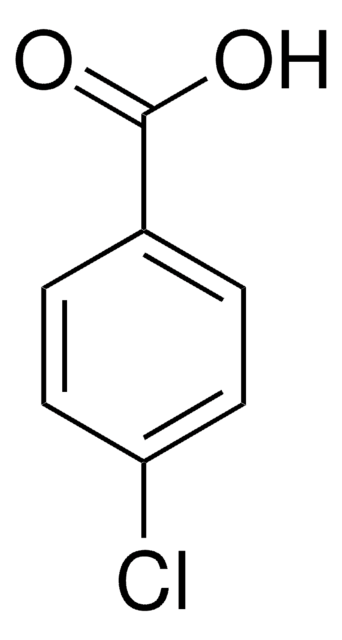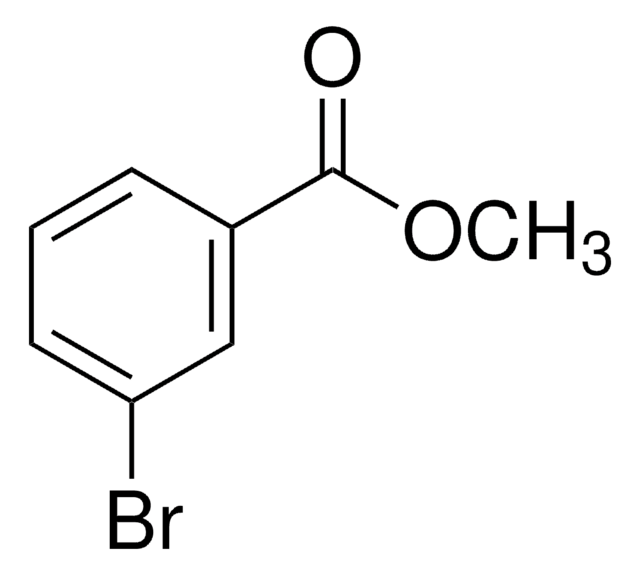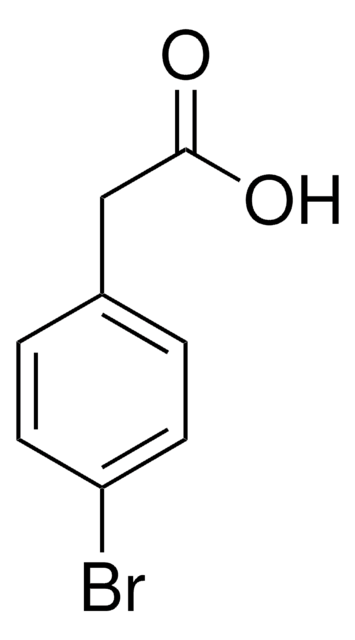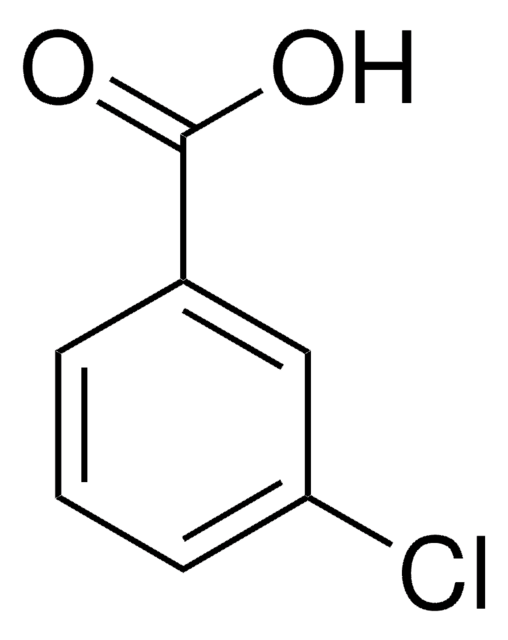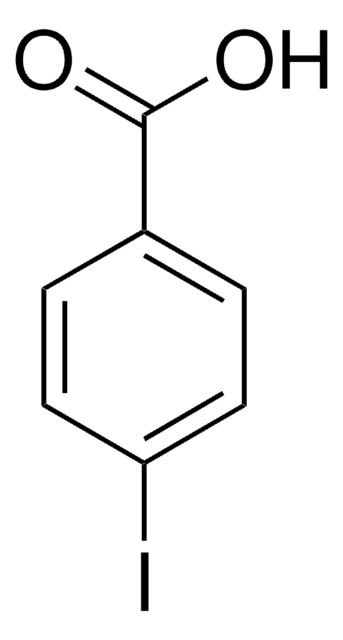All Photos(1)
About This Item
Linear Formula:
BrC6H4CO2H
CAS Number:
Molecular Weight:
201.02
Beilstein:
2041792
EC Number:
MDL number:
UNSPSC Code:
12352100
PubChem Substance ID:
NACRES:
NA.22
Recommended Products
Quality Level
Assay
98%
mp
155-158 °C (lit.)
solubility
methanol: soluble 50 mg/mL, clear, colorless
functional group
bromo
carboxylic acid
SMILES string
OC(=O)c1cccc(Br)c1
InChI
1S/C7H5BrO2/c8-6-3-1-2-5(4-6)7(9)10/h1-4H,(H,9,10)
InChI key
VOIZNVUXCQLQHS-UHFFFAOYSA-N
Looking for similar products? Visit Product Comparison Guide
Application
3-Bromobenzoic acid was used:
- as test solute in the determination of acidity constants by capillary zone electrophoresis
- as internal standard to study the retention mechanisms of an unmodified and a hydroxylated polystyrene-divinylbenzene polymer by solid-phase extraction
- in synthesis of N-(1,1-dimethyl-2-hydroxyethyl)-3-bromobenzamide
Signal Word
Warning
Hazard Statements
Precautionary Statements
Hazard Classifications
Eye Irrit. 2 - Skin Irrit. 2 - STOT SE 3
Target Organs
Respiratory system
Storage Class Code
11 - Combustible Solids
WGK
WGK 3
Personal Protective Equipment
dust mask type N95 (US), Eyeshields, Gloves
Choose from one of the most recent versions:
Already Own This Product?
Find documentation for the products that you have recently purchased in the Document Library.
Customers Also Viewed
S Ness et al.
Biochemistry, 39(18), 5312-5321 (2000-05-23)
Transition state analogue boronic acid inhibitors mimicking the structures and interactions of good penicillin substrates for the TEM-1 beta-lactamase of Escherchia coli were designed using graphic analyses based on the enzyme's 1.7 A crystallographic structure. The synthesis of two of
Susanne Jonsso et al.
Journal of chromatography. A, 963(1-2), 393-400 (2002-08-22)
Retention mechanisms of an unmodified and a hydroxylated polystyrene-divinylbenzene polymer were studied by solid-phase extraction of o-phthalic acid and some of its mono- and diesters from purified water and then analysing by GC-MS. The monoesters and phthalic acid were retained
Joan Marc Cabot et al.
Journal of chromatography. A, 1217(52), 8340-8345 (2010-11-23)
A fast method for the determination of acidity constants by CZE has been recently developed. This method is based on the use of an internal standard of pK(a) similar to that of the analyte. In this paper we establish the
Alejandro Fernández-Pumarega et al.
Analytica chimica acta, 1078, 221-230 (2019-07-31)
Determination of the retention factor of ionized compounds in microemulsion electrokinetic chromatography requires two mobility measurements at the same pH: one in the presence of the microemulsion and another in plain buffer. However, it has been observed that in some
Our team of scientists has experience in all areas of research including Life Science, Material Science, Chemical Synthesis, Chromatography, Analytical and many others.
Contact Technical Service